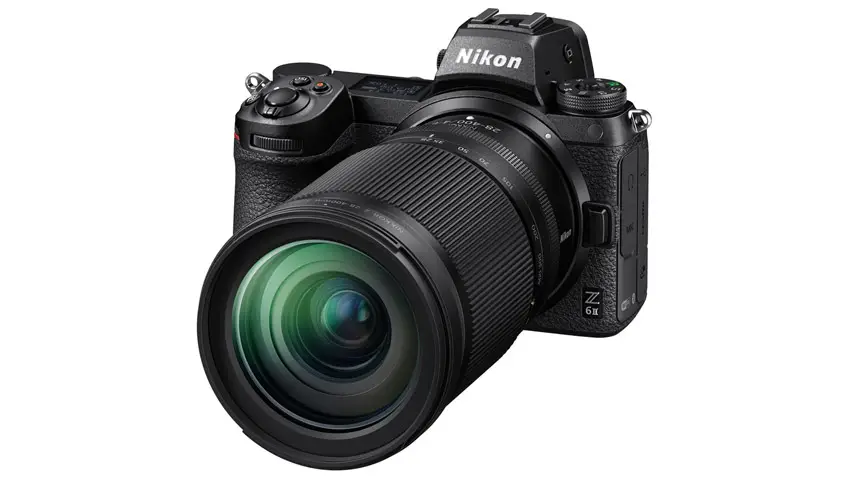
Late last year, we covered the iCraft Z760M Wi-Fi from new-to-us motherboard maker Maxsun. (It’s not often, after all, that we get to see a new player in PC mainboards.) Overall, we liked what it offered, and it was a valid option in that under-$200 market for late-model Intel CPUs. Today, we have the Challenger B650 Wi-Fi, which promises support for AMD’s Ryzen 7000 series CPUs (up to 170 watts), a single M.2 socket and three SATA ports for storage, and integrated Wi-Fi, parked on a basic-black PCB. While this semi-compact motherboard is not loaded with features, its $110 price may be attractive to budget-conscious users. You’ll just want to be sure you’re satisfied with its storage and USB connectivity limitations.Design and CPU/Memory SupportMaxsun’s Challenger B650M Wi-Fi sits on a black, multi-layer PCB with a large black heatsink covering the power-delivery area. The only design patterns are on this heatsink and the chipset. The VRM heatsink has a grey silk screening that shows off the Challenger brand, while the small, pushpin-attached chipset heatsink has the Maxsun branding. You won’t find any integrated RGB lighting or headers, so if you want them in your chassis, you’ll have to buy one that doesn’t need the 3-pin/4-pin RGB headers on the motherboard for control.
Since 1982, PCMag has tested and rated thousands of products to help you make better buying decisions. See how we test.
Our Challenger B650M Wi-Fi supports AMD Ryzen 7000 series desktop processors up to the Ryzen 9 7950X (170-watt TDP) and the latest Ryzen 8000 series APUs (65 watts). It’s worth noting that if you use a high-wattage processor, you’ll want to have good airflow in your case or active cooling on the board’s meager power-delivery components. It can handle these high-watt CPUs, but the power delivery gets hot, especially under sustained heavily multi-threaded activity.
(Credit: Joe Shields)
Memory support is listed up to a paltry DDR5-5200 according to the specifications, however, the Memory QVL lists support to DDR5-6400 (two kits). It’s limited compared to other boards but also well within AMD’s sweet spot for price to performance. Note that there are only two slots for the DRAM, with Maxsun listing maximum support for up to 64GB.
(Credit: Joe Shields)
Our DDR5-5600 and DDR5-6000 kits were stable by setting the internal XMP/EXPO profile, so all is well around these speeds. Since Maxsun doesn’t list support over DDR5-6400, we left our DDR5-7200 kit alone. The BIOS does have plenty of options to adjust the memory timings and sub-timings for those who’d like to maximize their performance on the platform.Layout and Internal ConnectorsWorking our way around the board, starting in the top left corner, we first see the 8-pin EPS connector to power the CPU. The VRM heatsink reaches out over the rear I/O bits and does an adequate job of cooling any processor you have. However, if you plan on using a high-wattage CPU and your workflows are heavily multi-threaded, be sure to have good airflow inside the case.Moving right and past the socket, along to the top edge, is the first of three 4-pin fan/pump headers. Each header supports DC and PWM-controlled devices. (You select between them in the BIOS.) Maxsun doesn’t list the output in the manual but confirmed that each supports up to 1A/12W. This isn’t a lot, so make sure you know how much each fan will take so as not to overload the motherboard.The next item we run into is the pair of DRAM slots. The slots secure the RAM with a single locking mechanism at the top. Maxsun lists support up to 64GB with speeds (on the memory QVL) up to DDR5-6400. So long as you’re good with 64GB (most users should be) and the “sweet spot” memory speeds, you’re in good shape. You’ll have to look elsewhere if you need more capacity or want faster RAM than what Maxsun has listed.
(Credit: Joe Shields)
Moving down the right edge, we run into the 24-pin ATX connector to power the board, three vertically oriented SATA ports, and a front-panel USB 3.2 Gen 1 (5Gbps) connector. It’s rather unusual to see the SATA ports in this area, but most chassis will have holes there for easy cable routing.Audio, Expansion, Storage, and Rear I/OJumping down to the bottom of the board, starting with the left side, we spy a fully exposed audio section. There aren’t any dedicated audio capacitors, EMI protection, or even an audio separation line for the dated and basic 5.1 channel Realtek ALC897 codec. The sound solution is what you’d expect from an entry-level class board like this, though many users will find it acceptable for daily use.Two PCIe slots and a single M.2 socket are in the middle of the board. The top PCIe slot connects through the CPU and gives you 16x PCIe 4.0 lanes (standard for the platform), while the x1 slot below attaches through the chipset and runs up to PCIe 3.0 x1. There isn’t much room for expansion, and the bandwidth is limited, but there is still support for lower-bandwidth add-ons.
(Credit: Joe Shields)
The sole M.2 socket sits just above the top PCIe slot. This socket supports PCIe 4.0 x4-capable modules up to 80mm long. It doesn’t come with a heatsink, so if you plan to use faster- and warmer-running M.2 devices, you may want to consider one with a heatsink to minimize the potential for thermal throttling. Other boards have at least two M.2 sockets, and some even use a PCIe 5.0-capable socket, so keep that in mind if you need more or prefer to have PCIe 5.0 support.The Key-E Wi-Fi card resides between the PCIe x1 slot and chipset heatsink. It’s not a pretty implementation, with wires running up to the rear I/O and the antenna connections, but it’s there!Along the bottom edge of the board, we find the front-panel-audio header, the two other 4-pin fan headers, a COM-port header, a USB 2.0 header, and finally, the front-panel header. Missing are any RGB headers. So again, if you’re looking to add some RGB bling, the kit you choose must have its own controller to adjust the patterns and brightness.
(Credit: Joe Shields)
The rear I/O on this Maxsun board has a simple metal I/O plate you must install yourself, classic style. There’s not much going on back here, but the loadout has the necessary items. From the left, you have the Wi-Fi antenna connections, HDMI and DisplayPort video outputs, four USB 3.2 Gen 1 (5Gbps) ports, a CMOS reset button, two USB 2.0 (480Mbps) ports, the Realtek 1GbE jack, and finally, a three-plug audio-jack stack. If you need a lot of rear USB ports (more than the six back here), you’ll have to add them using an expansion card in the PCIe 3.0 x1 slot.A Brief Look at the UEFI BIOS and UtilitiesMaxsun’s BIOS utilities are useful, with all the usual options, but they won’t win any design awards for a modern look. First, this BIOS doesn’t have an Easy Mode like other board partners’ BIOSes do, so it’s all an Advanced Mode of sorts, with headings listed across the top. The BIOS sports a black background with a portal/door image in the background. The white writing with yellow headers does make it easy to read. It affords many options to tweak, on par with any of the four major board partners; it’s just missing the stripped-down Easy Mode, and the appearance isn’t very refined.
(Credit: Maxsun)
The first section, Main, is more pure-informative than anything, displaying BIOS, processor, and RAM information. These details are on the left two-thirds of the screen, while on the right are current system details, including CPU and VRM temperature, fan speeds, and voltages.
(Credit: Maxsun)
The hardware is configured inside the Advanced section. From the CPU to the network, graphics, and USB, you’ll find it here. The Power section that deals with hibernation and how the system responds to power-off and power-on situations is not pictured.
(Credit: Maxsun)
The Turbo section is where you’ll find all the options to tweak the performance of the processor and RAM. Here, you can set XMP/EXPO modes for RAM and manually tweak the speed and timings. For the processor, plenty of options are available, including voltage and frequency adjustments, offsets, and more. But you’re limited to the maximum turbo multiplier and lower for the processor.Ultimately, the BIOS is perfectly serviceable; it just lacks the maturity of other BIOS, at least on appearances. The primary board partners present users with more refined UEFIs. But this should not be a deal-breaker, as you’ll find all the functionality, minus the Easy Mode, necessary for tweaking. Maxsun doesn’t offer much in the way of utilities. All I could find on the website was a MaxsunLED app to control any compatible RGB LEDs. The lack of integrated RGB headers will limit the usefulness of that app. Otherwise, it is devoid of any utility-type software.
(Credit: Maxsun)
A note if you get a different Maxsun board that does have RGB headers: The MaxsunLED app available for download at the Maxsun site is still (mostly) not written in English. We can still discern up to eight LED modes and speed and brightness adjustments via sliders, but it’s otherwise unreadable to me. You can also input a custom color in hexadecimal or RGB. My only complaint is that I cannot find an all-English version; you’ll likely be able to muddle through if you get a board that can use the app.Verdict: Entry-Level Pricing, Entry-Level Features and SpecsMaxsun’s Challenger B650M Wi-Fi is an entry-level board in the B650 market. For just over $100, you get a black motherboard with gray stenciling to show off some branding, but it’s otherwise dull, especially since it doesn’t have any integrated RGB or RGB headers. Storage may be a bit thin for some builders, with only one M.2 socket and three SATA ports, so be sure you know what you’re using and factor in any future needs. Outside of that, you get integrated Wi-Fi and a 1GbE, just-capable-enough power delivery, but solid all-around performance, even with a flagship-class 170W Ryzen 9 7950X. It’s a viable option in the budget B650 market, but you can get multiple M.2 slots and more SATA ports for just a few more dollars.
(Credit: Joe Shields)
Competing boards include MSI’s Pro B650M-P ($119.99), Gigabyte’s B650M D3HP ($109.99), ASRock’s B650M-HDV/M.2 ($119.99), and the Asus Pro B650M-CT-CSM ($159.99). The ASRock and Asus boards are the most handsomely equipped, including PCIe 5.0 M.2 and more SATA ports. Looks are up to the user, but if you’d like to control RGB lighting from the board, you’ll have no choice but to choose one of the other options.For around $110, Maxsun offers a complete MicroATX motherboard. While it may not have as many ports or slots as the others, its lower price among them does stand out. Its competition does offer more, but you’ll have to spend a little more to get there. If you can work within the hardware limitations for storage and rear USB port count, it’s a viable option for AMD in the entry-level space. And if you can find it for under $100, so much the better.
Like What You’re Reading?
Sign up for Lab Report to get the latest reviews and top product advice delivered right to your inbox.
This newsletter may contain advertising, deals, or affiliate links. Subscribing to a newsletter indicates your consent to our Terms of Use and Privacy Policy. You may unsubscribe from the newsletters at any time.






